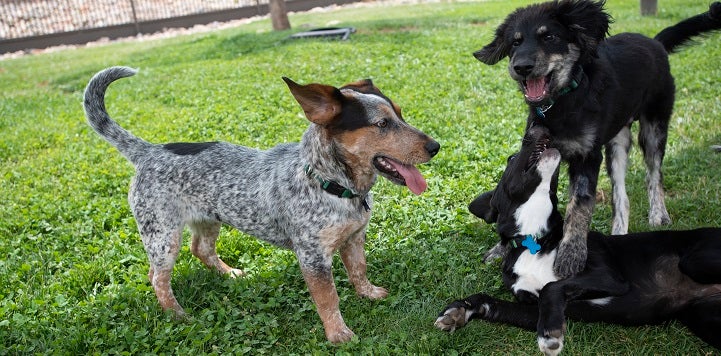
Grant Essentials
We have put together some basic grant information to help you ensure that your organization is eligible to apply for funding, as well as frequently asked questions, application guides, and definitions. We hope this information is helpful in preparing to apply.
Eligibility Requirements
Please make sure you are familiar with the following requirements before applying:
- Organizations must be a part of the Best Friends Network
- Click here to see if your organization is already a network partner.
- Programs must be implemented within the United States.
- Awarded grant funds must be spent within a one-year period.
Data Reporting Status
Read the reporting requirements carefully.
- If you are a shelter or rescue with intakes and outcomes, you must create an account to report your stats in Shelter Pet Data Alliance (SPDA) and submit the following data prior to submitting your LOI.
- You must report the following stats in SPDA in order to be eligible to apply for a grant:
- January 2023 to September 2024 monthly data
- To create your SPDA account:
- Click here to create your account
- For detailed instructions, you can access the SPDA User Guide
- If you run into any issues or have questions about SPDA that are not answered in the above guides, please use this form to contact us.
- Click here to create your account
- You must report the following stats in SPDA in order to be eligible to apply for a grant:
- If you are a spay/neuter group, intake prevention group, transport-only group or other group you will need to submit your 2023 annual stats using this form prior to submitting your application.
Please note that during an open grant cycle, our response time to emails and voicemails is significantly delayed. We ask that you take the time to ensure you meet all requirements and that you plan for those items you need us to verify. Since we are unable to fast track applications for partnership or respond to urgent requests during this time, we appreciate your understanding.
Letter of Interest (LOI) Information
This grant cycle, we will be collecting Letters of Interest as the first phase of the grant cycle. When applying for a grant, there will be a short form that you will submit for the applicable grant type.
Below, are the questions that are included in the LOI form to help in your preparation.
LOI- Rachael Ray Save Them All Grant
- Does your project goal plan to close the lifesaving gap to a 90% save rate or higher? (Yes or No)
- The amount requested (Note: Up to a maximum of $50,000 not to exceed 10% of operating budget)
- Lifesaving Programs (Note: What are the recommended lifesaving programs that will help close the gap based on your organization's specific needs?)
- Number of animals directly impacted by this grant project. (Note: Do not double count animals or estimate indirect impact in your calculation. For example, the spay/neuter of 50 cats cannot also be counted as 50 intakes prevented.)
- Provide a brief summary of your project and implementation timeline.
LOI- Rachael Ray No-Kill Excellence Grant
- Is your project aiming to maintain or help another organization achieve a 90% save rate? (Yes or No)
- Lifesaving Programs (Note: What are the recommended lifesaving programs that will help close the gap based on your organization's specific needs?)
- The amount requested (Note: up to a maximum of $60,000 and not to exceed 10% of operating budget)
- Number of animals directly impacted by this grant project.
- Has your organization maintained at least a 90% save rate for 12 consecutive months? (Yes or No)
- Will you be mentoring or training other shelters as part of your project?
- Provide a brief outline of your project plan and implementation timeline.
Once LOIs have been reviewed, should your project be of further consideration, you’ll move onto the second phase where you will be invited to submit a full application for funding consideration.
The letter of interest submission window for the 2025 Rachael Ray grant cycle is closed. Thank you to all that submitted!
FAQs
Are projects implemented in and/or impacting U.S. Territories eligible for grant funding?
- No, at this time our grant opportunities are not open to U.S. Territories.
Can I apply for both an STA and NKE grant?
- Yes, if your organization and project meets the criteria, you can apply for both grant types as long as the projects are different.
Can I apply for a grant if my organization has another Rachael Ray Grant in progress?
- Yes, you can apply, but we will consider the following:
- Progress made to date- are you on track to complete your open project on time?
- Grant progress reporting compliance for both monthly (as applicable) and quarterly reports.
How do I know which grant type my organization should apply for?
- See our chart to help guide you in making a decision.
What does it mean get the data for impacted shelter(s) if I’m not the shelter impacted?
- This means obtaining the intakes and outcomes stats for January 2023 to September 2024, broken down monthly, for any shelter(s) other than your own that will be impacted by your project.
- If funded, you will be required to provide these stats for each impacted shelter, broken down monthly, for the remainder of 2024, as well as for the duration of your grant project.
- Click here for additional information on recipient reporting requirements.
- If funded, you will be required to provide these stats for each impacted shelter, broken down monthly, for the remainder of 2024, as well as for the duration of your grant project.
I have the shelter data. How do I tell who to focus help on?
- Talk to shelter leadership, they will know who it is they’re struggling to help.
- Seek to understand what it is they need or don’t have that if they did, would provide a specific population of cats or dogs live outcomes when possible.
- You can also look at the Shelter intake and Shelter euthanasia numbers. Ultimately the goal of the funding is to see less of a specific population of animals euthanized for preventable matters.
- Who is being euthanized currently and why? OF those animals euthanized for lack of space/time/resources or support, targeting a project to provide such elements is what this grant opportunity is seeking.
Do I have to provide data for both cats and dogs if my project will only impact one of the species?
- Yes, in order for us to calculate the impact of your project on the lifesaving gap at your own shelter or impacted shelter(s), we need monthly data for both cats and dogs.
Can I still apply if I’m not able to get an impacted shelter’s data?
- We cannot fund projects that impact shelters for which data is unobtainable, but we might be able to assist.
- If you are running into challenges with obtaining data from an impacted shelter(s), please reach out to your regional team for guidance.
When will grant decisions be announced?
- Applicants will be notified of a grant decision approximately by the end of December 2024.
Who can I contact if after reviewing all of the grant information on the website, I still have questions?
- For questions about eligibility requirements or accessing/using our grant management platform, please reach out to networkgrants@bestfriends.org.
Definitions
Live Intakes: Live cats and/or dogs admitted to a shelter.
Live Outcomes: Cats and/or dogs who leave a shelter alive through adoption, return to owner, transfer to another organization for adoption, or any other lifesaving. program.
Other Outcomes: Cats and/org dogs who did not leave the shelter alive.
Lifesaving Gap: the number of cats and dogs who would have had to be saved last year in order to achieve the 90% save rate threshold.
- The calculation we use to determine lifesaving gap is:
- (Shelter Deaths* + Lost in Care) – (Live Intakes x 10%)
* Shelter Deaths = animals euthanized, killed, or died in care
Impacted shelter: A shelter, other than the recipient, whose save rate or lifesaving gap will improve as a result of a project's funding.
Kitten intake diversion support: Organization or agency provides alternative to shelter intake for shelter without means to provide care for positive outcome opportunity.
Targeted TNR: projects such as funding to provide an alternative for community cats in lieu of shelter intake (where the org facilitates surgeries and return, avoiding the cat entering shelter OR an organization that assists a shelter with a positive outcome pathway for community cats in the shelter (facilitating pull, surgeries, and return). These are examples of TNR activities having a direct and measurable reduction shelter killing.
I want to learn more about:



